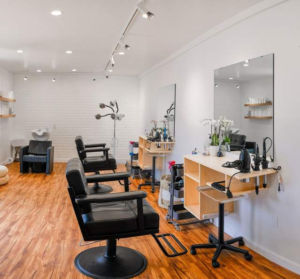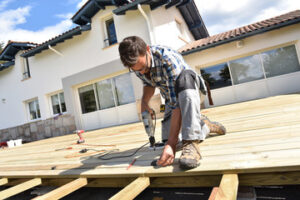There is a growing demand for salons that specialize in working with curly and textured hair. It can be difficult to find the right salon, but with some research you can make a wise decision. Look for a stylist experienced in working with your curl type and using quality products. Click the Curly Hair Salon NYC to learn more.
When it comes to embracing your natural curls, the right hair salon is essential. These curly-hair specialists understand your hair’s unique texture and can help you achieve a head-turning look. Whether you’re looking for a transformative haircut or a stunning color transformation, these stylists will leave your curls with a new level of definition and elegance.

Hair Rules was started by Anthony Dickey, who calls himself the “Texture Guru.” His knowledge of all textures is vast as he has worked on everyone from Solange to Sarah Jessica Parker and Minnie Driver. He first shared his expertise in 2003 with the release of his book, “Hair Rules!”, which became a catalyst for the industry to redefine their standards and cater to the beauty needs of all textures.
The stylists at this boutique salon are certified Ouidad-Curl Specialists and experts when it comes to enhancing and defining your curls. Their services range from haircuts to styling and color, and their dedication to educating clients on curly hair care is what sets them apart.
Miss Rizos Salon believes that “knowledge is power.” This philosophy translates into the way the salon approaches haircare for all curl patterns. They offer an array of cuts, washes, and conditioning treatments that will leave your curls full, healthy, and beautiful.
Located in the heart of Harlem, this trendy salon offers a wide range of services catering to all curl types. Their talented stylists take the time to understand your curl pattern and texture, which allows them to provide you with a custom cut and styling service. The staff at Fox & Jane are also knowledgeable about curly hair products and can recommend the best ones for your unique hair.
This luxurious salon offers a wide range of services that cater to all hair types, but their curly clients love this place because of the stylists’ attention to detail and thorough consultations. Their colorists are also very knowledgeable about curly hair, so you can trust them to give you a great color without compromising your curls’ integrity. However, it’s worth noting that some of the reviews for this salon aren’t great. For example, one review said that the stylist named Monique “will cut off more than an inch of hair when you only want a light trim and then gives you attitude about it.”
Headchop Hair Studio
Headchop is one of the best places for curly hair in NYC, with stylists who specialize in working on textured locks. The salon offers a wide range of services, from scalp treatments and blowouts to styling updos for special occasions. They also offer a selection of products that are specially designed to work well with curly hair.
This Brooklyn salon is a go-to for anyone with curly hair, whether they are looking for a straightening service or a cut that highlights their natural curl pattern. The stylists at this salon have a lot of experience working with curly hair, and they always strive to create the look that works best for each client.
Another popular destination for curly hair is Ouidad, which features a team of certified curl specialists. The stylists at this salon have mastered the art of cutting and styling curly hair, and they use the Ouidad Carve and Slice technique to give their clients the perfect look.
Celebrity hairstylist Ursula Stephen has a star-studded client list, and she opened this luxury salon to celebrate her love of curly and textured locks. The stylists at this salon know how to make their clients feel beautiful and confident, and they offer a variety of services including hair extensions, makeup looks, blowouts, and styling services.
This East Village salon has been around for more than 20 years, and it is still a favorite among curly haired ladies. The stylists at this salon follow classic techniques like Devacurl’s dry cutting method and rely on the curly girl philosophy to understand and work with each person’s unique curl pattern.
This boutique salon is known for its welcoming atmosphere and inclusivity. They specialize in all hair textures, and their stylists take the time to understand each client’s individual curl pattern and texture. They also have a variety of styling and color services, so you can get the look you want no matter what your curl type is. They even have a color consultation service that can help you choose the right shade for your hair.
Andre Richard Salon
With a fun and friendly vibe, Andre Richard Salon is one of Philadelphia’s best hair salons. Its award-winning team of experts offers a full range of services, including haircuts and color, highlights, balayage, men’s styling, and keratin treatments. The salon also provides a variety of hair replacement options and scalp care for those with thinning hair. Its stylists are well-trained and use premium products like Redken, Phyto, and Devacurl to maximize hair’s beauty and health.
The hair stylists at Andre Richard Salon are highly skilled and experienced, so you can be sure you will get the look you want. They specialize in creating balayage, which is a technique that blends blonde and warm tones to give your hair a natural-looking glow. They also offer a variety of other beauty services, including makeup and bridal services. The salon has a convenient location in the heart of Rittenhouse Center City and has flexible operating hours.
Andre Richard is an expert in the field of hair loss, providing custom solutions that are tailored to each client’s needs. In this video, she demonstrates how she creates a lace hair patch that looks completely natural. She also offers a variety of other hair replacement solutions, such as toupees and full lace wigs.
Located in the heart of Center City, Andre Richard Salon is the premier hair destination for women and men of all ages. The expert team of stylists are committed to ensuring that each client receives the service they deserve. They use top-notch products to maximize the beauty and health of each client’s hair, and are dedicated to empowering them with confidence and style.
The hair stylists at Andre Richard Salon offer a wide range of services, from precision haircuts and color to keratin treatments, extensions, and bridal services. They have a fun, friendly atmosphere that is perfect for a day of pampering and are dedicated to giving you the look you’ve always wanted. They also use premium products like Redken, Phyto, Pureology, and Devacurl to ensure that your hair is healthy and beautiful.
Antonio Berducci Salon
For a salon that recognizes and embraces curly hair, look no further than Antonio Berducci Salon. Known as a specialist and guru in the industry, the New York City-based beauty spot caters to every type of curl pattern, offering haircuts, color services and personalized haircare regimens. Stylists take the time to listen and educate clients on how to style and care for their strands, often suggesting specific products from brands like Curly World, Ouidad and Innersense.
A favorite among curly-haired beauty enthusiasts, this Staten Island salon is a go-to for everything from precision cuts to trendy styling techniques. With a roster of celebrity stylists, this salon is a curly-hair enthusiast’s dream. The stylists here are skilled in working with all types of curly and textured locks, so you’ll leave feeling confident about your new do.
This salon specializes in haircare for afro-curly locks, creating a nurturing environment that celebrates the beauty of diversity. Owner Miss Rizos, a curly hair specialist, created her brand on the foundation that knowledge is power, and this approach shines through in their dedicated service. They offer a variety of services, including wash and gos, cornrows, flat twists and loc extensions.
With multiple locations, this national hair salon chain is a one-stop shop for all things curly. They’re renowned for their Ouidad-certified curl specialists, who are experts in recognizing and understanding your unique curl pattern and texture. They’re known for reforming curls using their signature Carving and Slicing technique and for offering transformative treatments that boost moisture, reduce frizz and strengthen strands.
One of the OG NYC hair salons that has catered to all hair textures since 1987, this salon is owned by a curly-hair specialist who believes that “hair is hair, whether it’s straight, wavy or textured.” You can book an appointment with founder Wendy Smith herself, who works with you to create a cut that fits your individual curl pattern and texture, or opt for a stylist trained in her Mona Cut (a dry cutting technique that allows you to maintain a full, voluminous shape). The salon also offers color, styling and bridal services.
